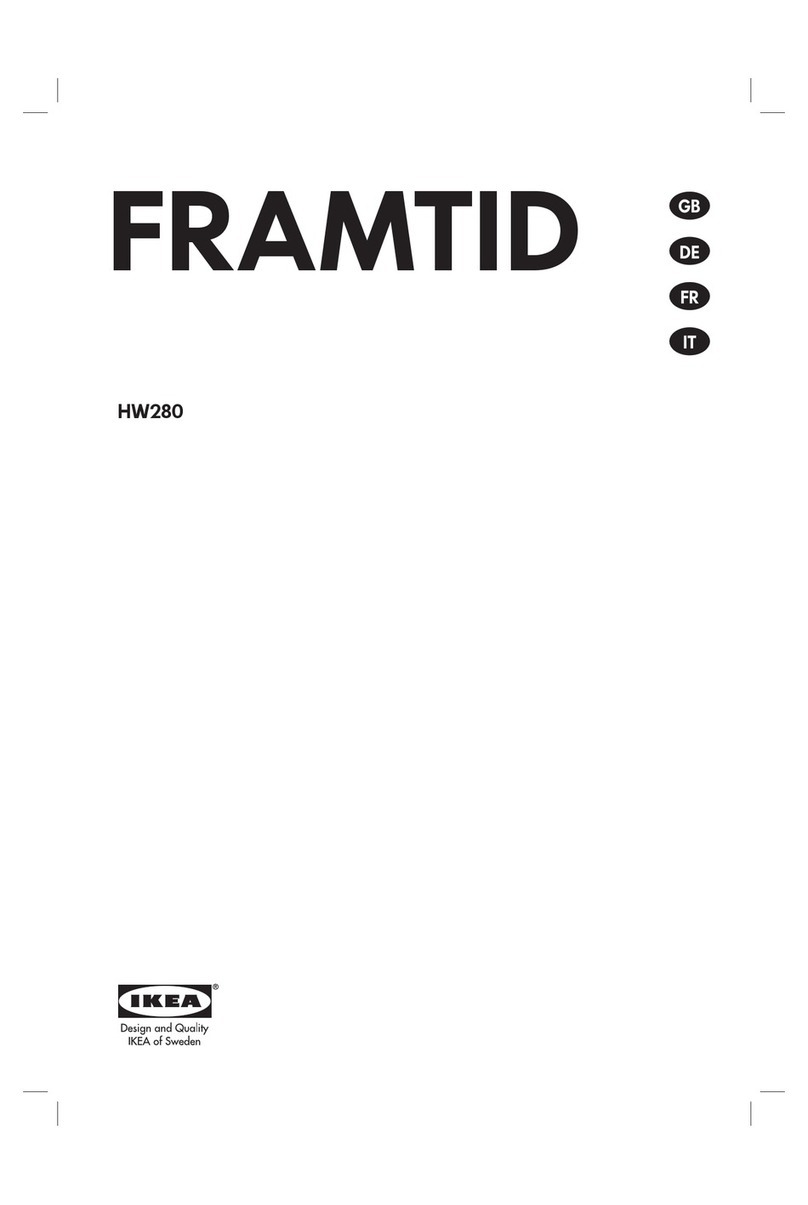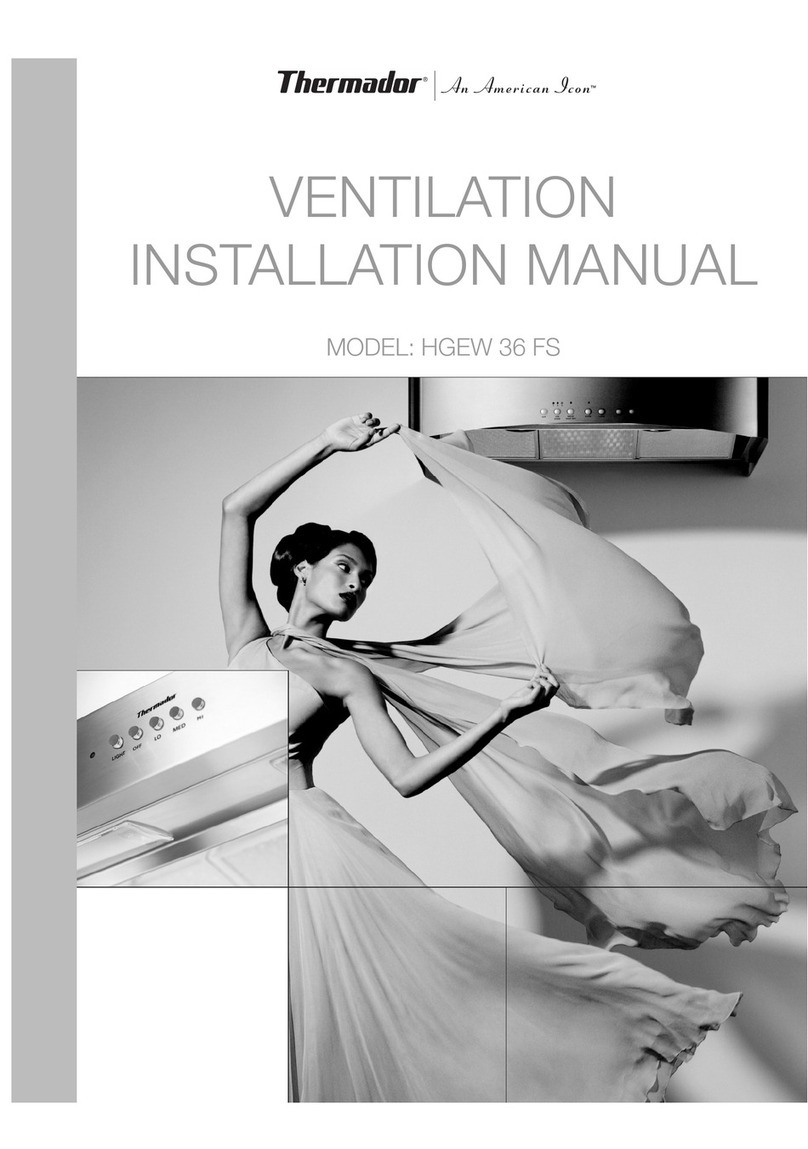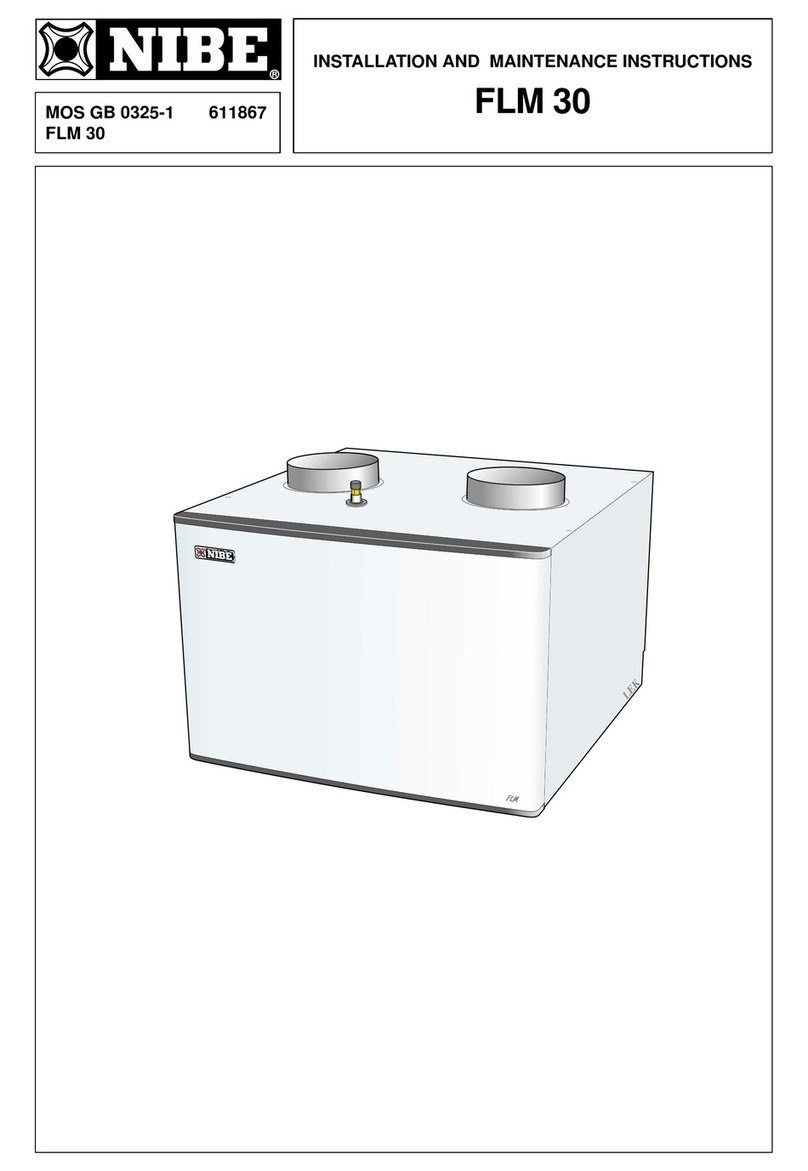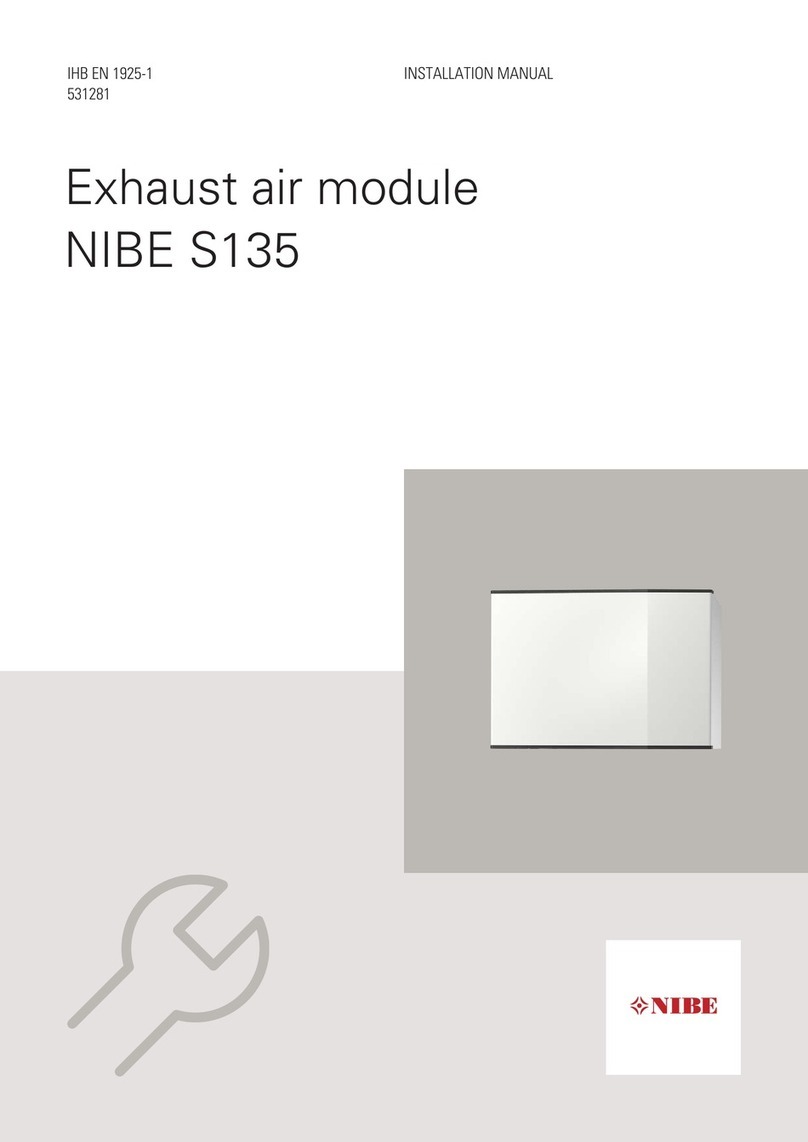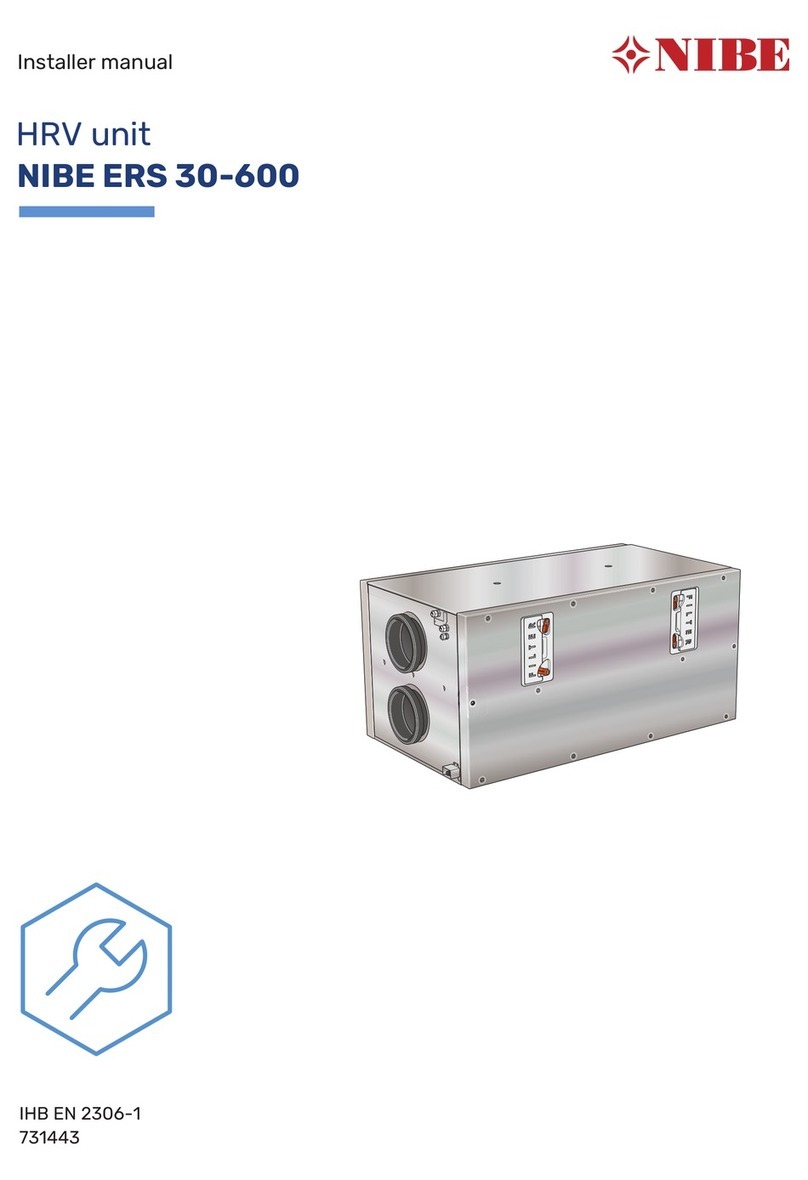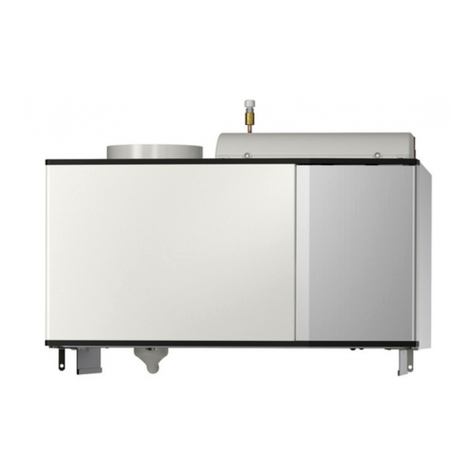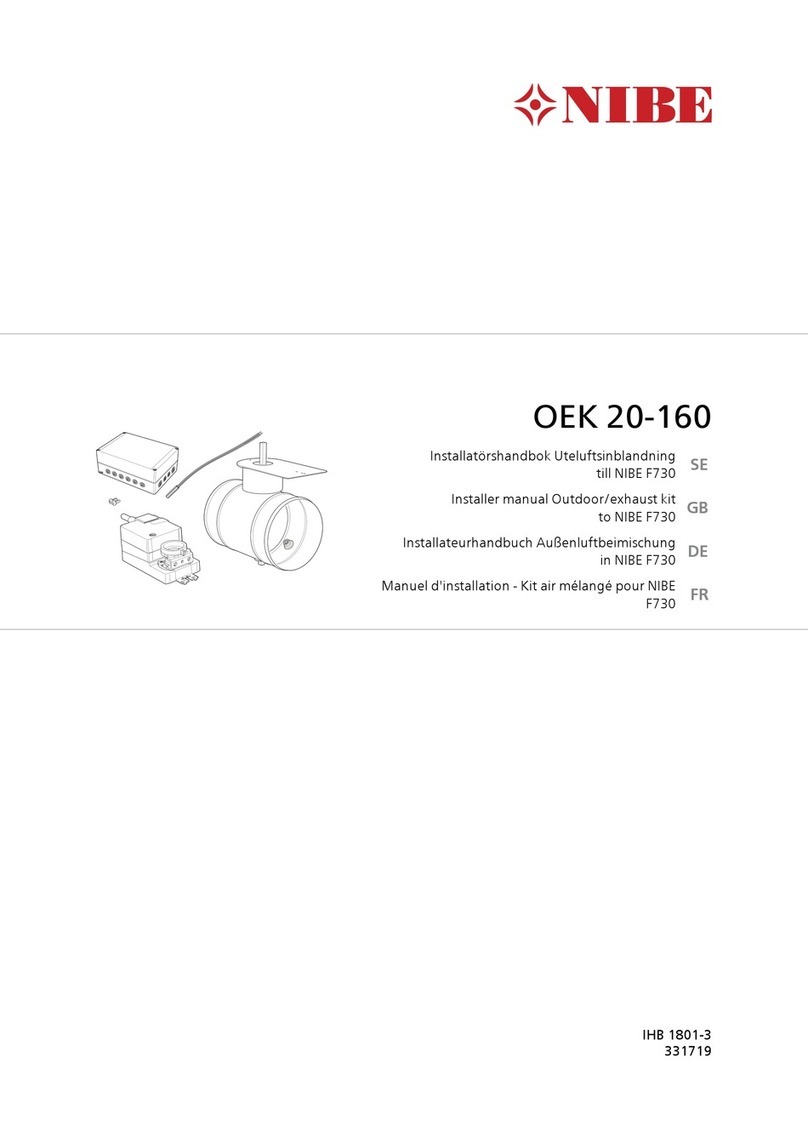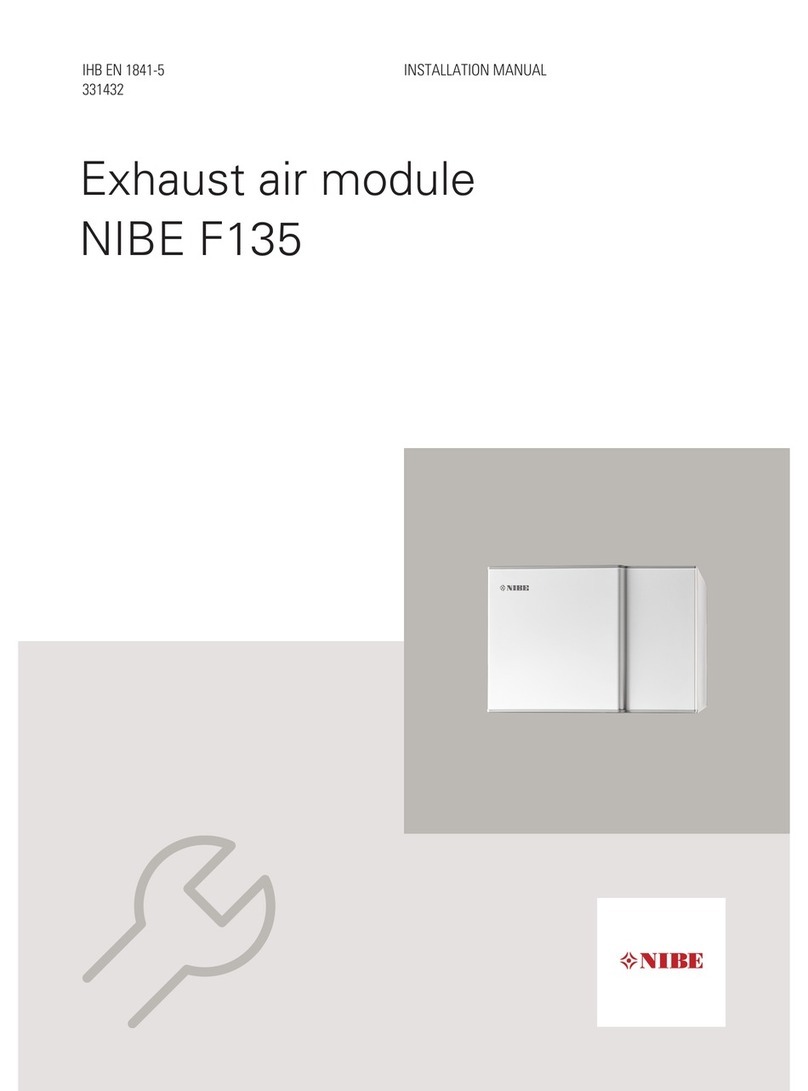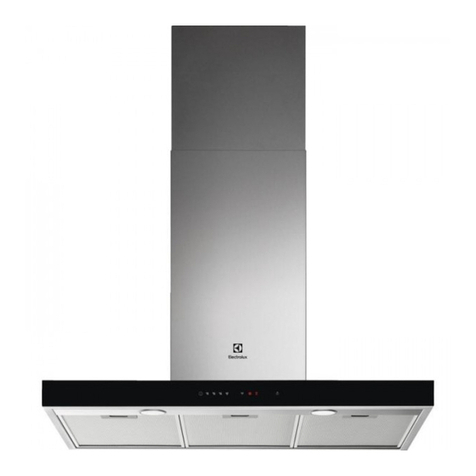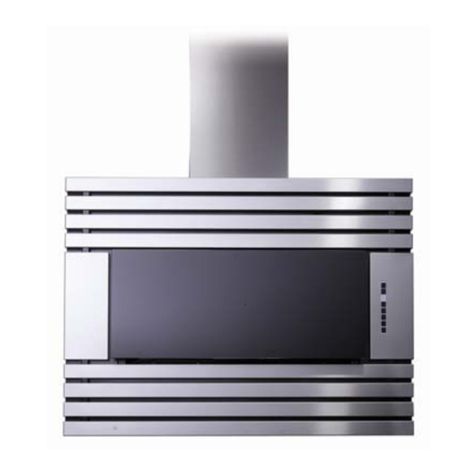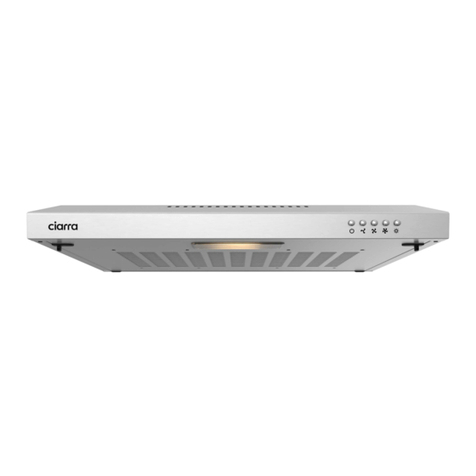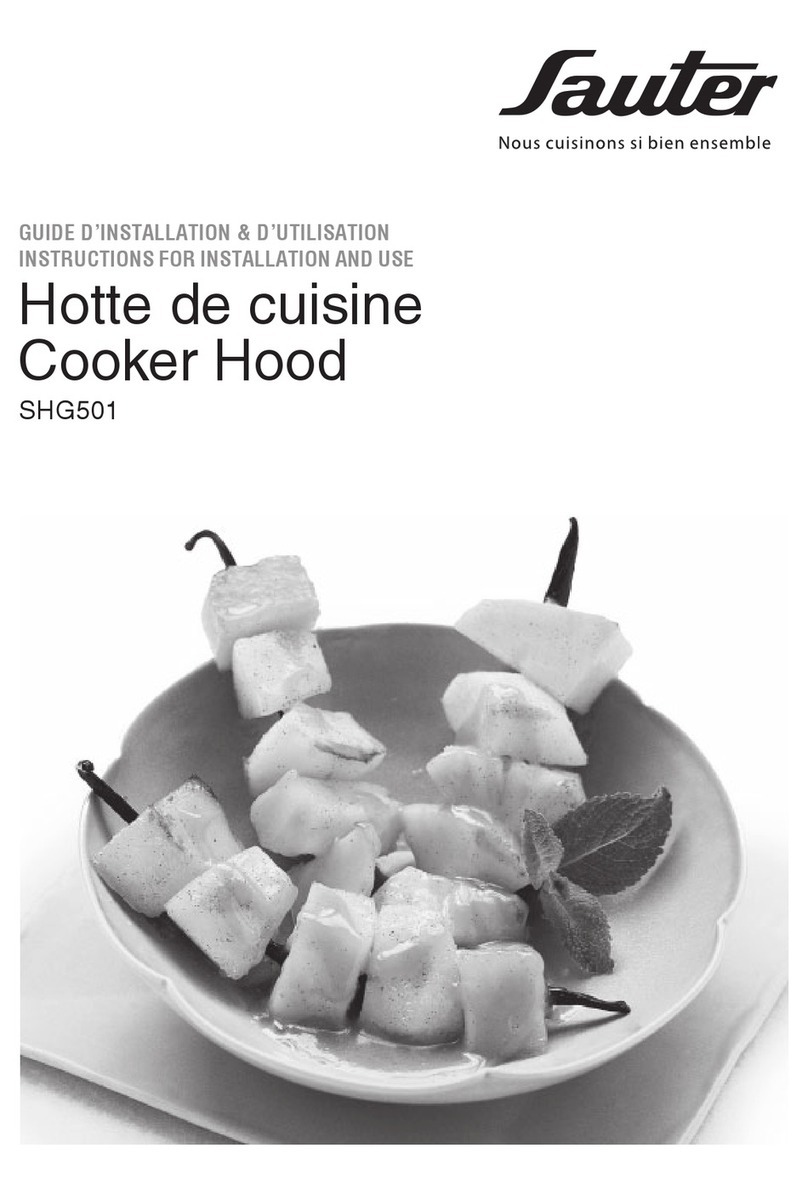
Condensation water drain
ERS 20 can produce several litres of condensation water
per day. It is therefore important that the condensation
outlet is correctly executed and the HRV unit installed hori-
zontally.
Check that the water seal is airtight and firmly in position.
The connection must be made so that the user can check
and top up the water seal, without opening ERS 20.
The connection for the condensation outlet measures Ø15
mm.
CLEANINGTHECONDENSATIONWATERDRAIN
Condensation forms when ERS 20 is working. This condens-
ation is led off and collected in the condensation water drain.
Apart from water, a certain amount of dust and particles
also collect there.
Check regularly that the condensation water drain and any
floor drains are not blocked; water must be able to run
through freely. Clean, if necessary.
NOTE
During operation, negative pressure arises in the
HRV unit, which means that a water column of at
least 100 mm must be guaranteed in the water
seal.
General ventilation connections
•Ventilation installation must be carried out in accordance
with current norms and directives.
•Provision must be made for inspection and cleaning of
the duct.
•The air duct system must be a minimum of air tightness
class B.
•To prevent fan noise being transferred to the ventilation
devices, install silencers in suitable locations in the duct
system.
•The extract air and outdoor air ducts are insulated using
diffusion-proof material along their entire lengths.
•Ensure that the condensation insulation is fully sealed at
any joints and/or at lead-in nipples, silencers, roof cowls
or similar.
•The air must be routed to the outdoor air duct through an
outer wall grille in the facade. The outer wall grille must
be installed so that it is protected from the weather and
must be designed so that no rainwater and/or snow can
penetrate the facade or follow the air into the duct.
•When positioning the outdoor air and extract air
hood/grille, bear in mind that the two air flows must not
short circuit to prevent the extract air from being drawn
into ERS 20 again.
•A duct in a masonry chimney stack must not be used for
extract air or outdoor air.
NOTE
To ensure a sealed connection to ERS 20, nipples
must be used when connecting the air ducts.
EXHAUST AIR DUCT /KITCHEN FAN
Exhaust air duct (kitchen fan) must not be connected to
ERS 20.
To prevent cooking odours from being led to the ERS 20,
the distance between the kitchen fan and the exhaust air
valve must be taken into consideration. The distance must
not be less than 1.5 m, but may vary between different in-
stallations.
Always use a kitchen fan when cooking.
Ventilation flow
Connect ERS 20 so that all the exhaust air, except kitchen
duct air (kitchen fan), passes through the heat exchanger
(EP26) in the product.
The ventilation flow must comply with the applicable national
standards.
NIBE ERS 20-300Chapter 4 | Ventilation connections10
S
Ventilation connections




